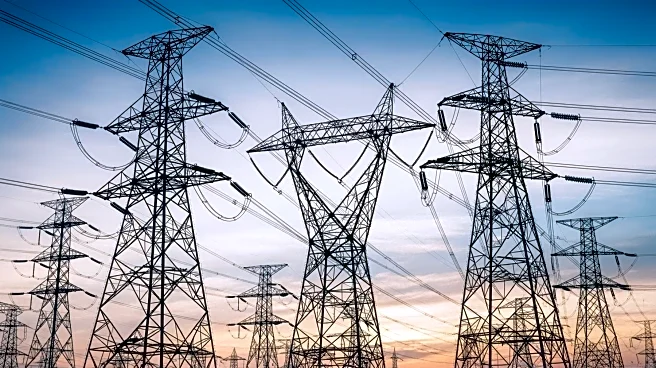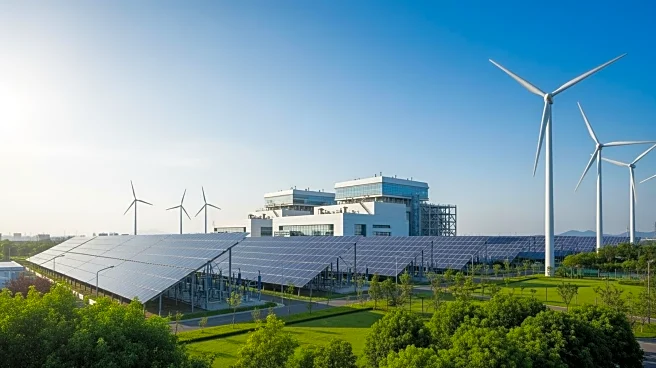What's Happening?
A recent study conducted by researchers at Lawrence Berkeley National Laboratory and the consulting group Brattle has identified infrastructure costs as the primary factor behind rising electricity prices
in the United States, rather than the proliferation of data centers. The study analyzed electricity demand and pricing trends between 2019 and 2024, revealing that states with increased electricity demand often experienced lower prices. This counterintuitive finding challenges the common belief that data centers, which are significant electricity consumers, are responsible for driving up costs. Instead, the study highlights the role of fixed costs associated with maintaining and upgrading the electrical grid infrastructure, including poles, wires, and disaster-proofing measures, as the main contributors to rising rates.
Why It's Important?
The findings of this study have significant implications for policymakers and stakeholders in the energy sector. Understanding that infrastructure costs, rather than data center demand, are driving electricity prices can inform more effective strategies for managing energy costs. This insight is crucial for states like California, which face high costs due to extreme weather events and the need for infrastructure upgrades. Additionally, the study suggests that policies promoting renewable energy, such as renewable-portfolio standards, can also impact electricity prices. By focusing on infrastructure improvements and strategic planning, utilities and governments can better manage costs and support the transition to cleaner energy sources.
What's Next?
The study's findings may prompt utilities and policymakers to reassess their strategies for managing electricity costs. As infrastructure costs continue to rise, there may be increased investment in upgrading and disaster-proofing the electrical grid. States with renewable energy mandates might also reconsider the balance between promoting clean energy and managing consumer costs. Additionally, the study could influence political debates, as candidates and lawmakers address the complexities of energy pricing and infrastructure investment in their platforms.
Beyond the Headlines
The study sheds light on the broader implications of energy infrastructure management, highlighting the need for a nuanced understanding of electricity pricing dynamics. It underscores the importance of considering fixed infrastructure costs in energy policy discussions, which could lead to more sustainable and equitable energy solutions. Furthermore, the findings may encourage innovation in grid management and disaster preparedness, ultimately contributing to a more resilient energy system.












